Buon appetito: Sicilian chef brings authentic Italian flavors to the Big Island at Nui Italian
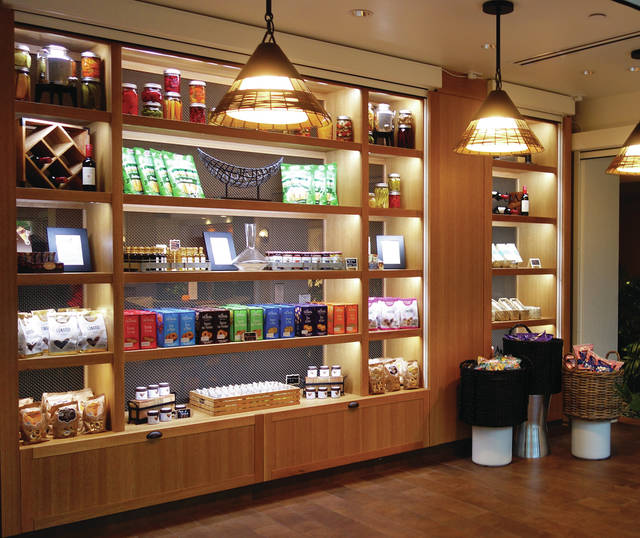
Delicacies imported from Italy are displayed at the restaurant’s entrance, along with grab-and-go food and beverages. (LANDRY FULLER/SPECIAL TO WEST HAWAII TODAY)
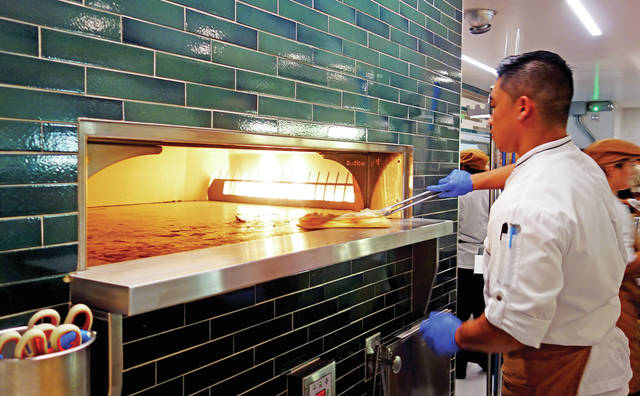
Pizzas are cooked to perfection in an oversized oven designed in Italy. (LANDRY FULLER/SPECIAL TO WEST HAWAII TODAY)
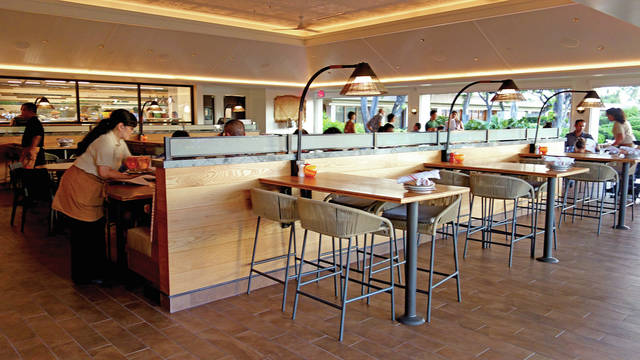
The indoor, outdoor restaurant seats 150 to 175 people. Additional seating is available in the bar, and take-out orders are also an option.
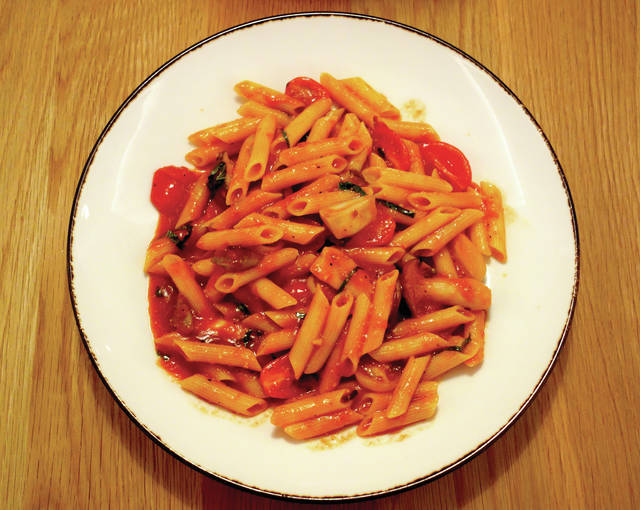
Pasta dishes are plentiful at Nui Italian. Fettuccine and linguine are handmade in-house. (LANDRY FULLER/SPECIAL TO WEST HAWAII TODAY)
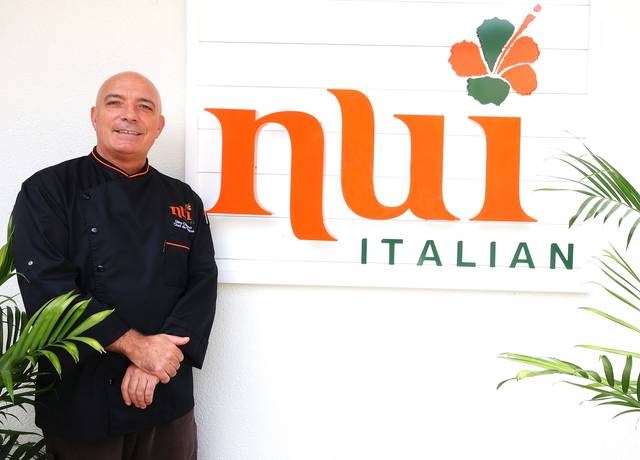
The restaurant’s chef, Gino Cipriano, was born and raised in Taormina, Italy. (Photos by LANDRY FULLER/SPECIAL TO WEST HAWAII TODAY)
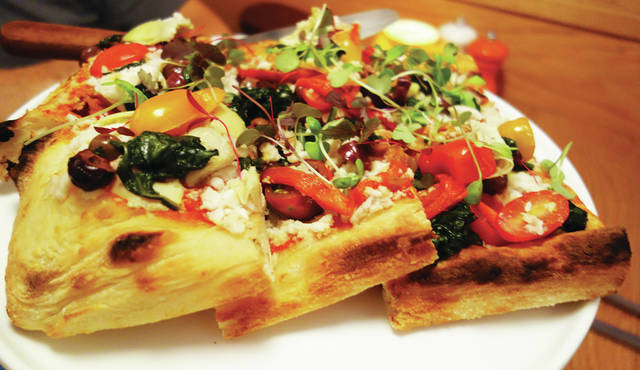
Roman pizza, which resembles focaccia bread, is a popular item on the menu.
WAIKOLOA — The view of Mount Etna from Taormina, Italy on the east coast of Sicily has a striking resemblance to the view of Mauna Kea from Waimea, so Chef Gino Cipriano felt right at home when he moved to the Big Island.
WAIKOLOA — The view of Mount Etna from Taormina, Italy on the east coast of Sicily has a striking resemblance to the view of Mauna Kea from Waimea, so Chef Gino Cipriano felt right at home when he moved to the Big Island.
“When we first visited for my job interview, we drove around and it was very surprising. It looked like my town, my island, almost the same shape,” he said. “There is also a volcano at Mount Etna.”
Born and raised in Taormina, Chef Cipriano joined Hilton Waikoloa Village in May, bringing his vast culinary talents to Nui Italian, the resort’s newest restaurant. It opened last month following nine months of construction.
He and his kitchen staff of 20 dish up family-friendly Italian fare for around 300 people every day.
The space formerly housed Imari, a Japanese restaurant that closed in May 2017. Nui Italian’s multi-million dollar renovation took more than two years from the conceptual stage, to design, to construction.
The idea was conceived through joint efforts from Hilton corporate and the hotel’s food and beverage team with a common goal to create a fresh take on Italian food. The next steps were to find the right chef, come up with a new design and bring it to life.
Nui Italian is the only place on the island that serves rectangular-shaped Roman pizza — a variety that resembles focaccia bread — made from flour imported from Italy. The dough is aged for 72 hours to let the yeast ferment, creating airy bubbles and a chewy, yet crispy texture that bakes to perfection in a massive pizza oven. Dough for the traditional, round Neapolitan pizza is aged for 48 hours.
The main section of the open-air restaurant can accommodate 150 to 175 diners each night. Many of the menu items are served family style, as commonly found in Italy.
“My mother and grandmother would serve us a big bowl of homemade pasta, homemade meatballs, sausage with a nice sauce and some sort of meat,” Chef Cipriano said. “We would stay at the table for two-and-a-half or three hours. My father was very firm about us eating together.”
On the lawn just outside the restaurant, an herb garden was recently planted to grow fresh basil, oregano, thyme, rosemary and sage. There’s also a lemon tree nearby.
“Soon we will harvest some lemons to make the breadcrumbs for our Chicken Milanese,” Chef Cipriano said.
The restaurant’s name was selected from hundreds of options.
“During a lunch meeting one day, a staff member came up with the name nui. We looked up the Hawaiian meaning — grand or great — and felt it fit the restaurant’s concept. We added Italian to identify the restaurant,” Simon Amos said, the hotel’s manager.
Many of the organic ingredients used at the restaurant — including baby romaine, baby heirloom tomatoes, cucumbers and Hamakua mushrooms — are locally sourced from growers such as Hirabara Farms and Adaptations, with deliveries made daily. Kona Fish supplies the fresh mahimahi, while other key ingredients are imported from Italy.
Ahi tuna crudo is among Chef Cipriano’s favorite dishes.
“I come from an island and we had a lot of seafood there,” he said. “I also love the pork tenderloin and know people like pork here too. The garganelli pasta is one of my other favorites.”
The flour used to make Nui Italian’s pizza dough is Polselli, a brand produced by a third-generation family business in Arce, Italy. Fettuccine, linguine and Italian sausages are handmade in-house. Imported San Marzano tomatoes are used to make the restaurant’s homemade red sauce.
Chef Cipriano calls the kitchen his “Focaccia &Pizza Laboratory.” Measurements for the pizza dough are handwritten on a glass wall and resemble Einstein’s mathematical formulas. FWOSY is an abbreviation representing the five ingredients: flour, water, oil, salt and yeast.
Young children can often be found peering expectantly through the glass into the display kitchen to watch their meals being prepared.
Some of the pizza toppings — such as heirloom cherry tomatoes, prosciutto and arugula — are added after the pizza has finished baking, giving them the freshest flavor.
The restaurant’s 6,000-pound pizza oven was designed in Italy and cooks an average of 300 pizzas daily. It’s so large it had to be delivered to the kitchen via a 50-foot crane. Its exterior is covered with an intricate pattern of colored ceramic tiles. Each pizza is cooked for approximately four minutes at between 741 and 746 degrees Fahrenheit, fueled by kiawe wood.
Bryant Mota dined in the restaurant last Monday while on a visit from Los Angeles with his family.
“We ordered ahi tuna and bruschetta for the appetizers. Then we had the Roman pizza. It was amazing — the bread, the texture and everything,” he said.
Traditional tiramisu, cannoli, gelato and sorbet complete the menu. The restaurant’s bar and lounge has its own select menu, classic Italian beer on draft and a variety of wines and cocktails. Grab-and-go dishes, beverages, snacks and Italian delicacies are showcased in two large display cases at the restaurant’s entrance.
“In just three weeks open, we’ve had people driving from Hilo, Kona and all over the island,” said the restaurant’s manager, Steve Katz. “Locals have come two or three times already. It’s really rewarding.”
Chef Cipriano brings more than 25 years of culinary experience to the restaurant. He spent the first years of his career working at resorts in Venice, Florence, Taormina and Rome. He then headed to Paris before coming to the U.S. for positions at resort restaurants in Miami and San Francisco.
“Gino is an old-school Italian chef,” the hotel’s Executive Chef Arnaud Masset said. “His shrimp scampi is very popular so far because people are familiar with that dish. The ribeye has been a big seller as well, and the Roman pizza is a top item because people haven’t had it before. It’s so light and amazing. We and our kitchen employees have many ideas for how we can add Hawaiian influences to new dishes in the future.”
Given that 25 percent of all U.S. citizens are lactose intolerant, according to the Physicians Committee for Responsible Medicine, the restaurant’s staff are sensitive to diners’ needs and offer dairy-free and gluten-free options ranging from two salads to corn pasta, pizza dough made from rice, pork tenderloin and ribeye entrees. Vegan dishes are also available.
“I’ve been lactose intolerant since I was 12,” Chef Masset said. “A lot of people have more allergies nowadays because of what we eat and are more cautious about where they buy their food and where it’s from. We are what we eat. That’s why we use local ingredients.”
Nui Italian grab-and-go items are available from 4-10 p.m. The bar is open 4 p.m.-midnight and the restaurant 5-10 p.m. daily. The dress code is casual but reservations can be made in advance at www.hiltonwaikoloavillage.com/nui.


